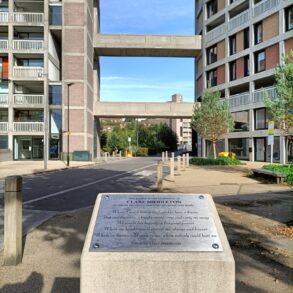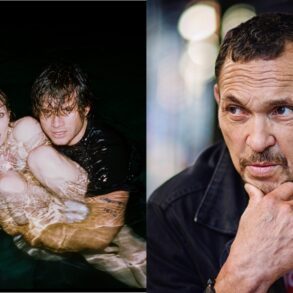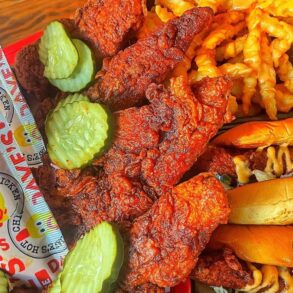BBC News, Yorkshire
 Trik09/Instagram
Trik09/InstagramStreet art is ingrained in the fabric of Sheffield. Wherever you stand, in the city centre in particular, there is likely to be a wall in your eyeline adorned with a spray-painted mural.
Pete McKee’s “The Snog” on the side of Fagan’s, Phlegm’s eery monochrome pieces which have travelled to Norway and Spain, and Peachzz’s world-renowned 25-metre tall “Reverie” are among the well-known pieces in the city.
Peachzz, whose real name is Megan Russell, has co-founded an upcoming street art festival. She said the city was “ready for a boost” after artists found they were losing blank canvases on derelict buildings to redevelopment projects.
“I can feel excitement in the air. I’m hoping it’s going to burst, and we are going to have a load of new art come through,” she said.
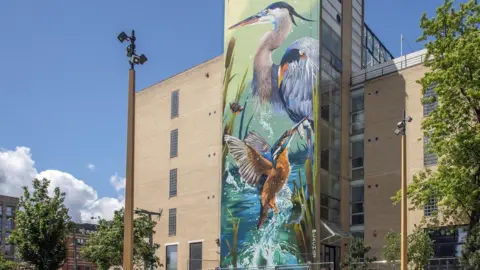 Street Art Atlas
Street Art AtlasSheffield’s industrial history meant that when warehouses and factories were left abandoned, they created a breeding ground for street and graffiti artists.
The former Cannon Brewery on Rutland Road, which closed in 1999, was an “amazing space” for artists but “very dangerous”.
“I wouldn’t recommend anyone do it – my friend nearly fell down a hole there. We threw a cap down it and we heard it go, ‘dink, dink, dink’ for ages,” she said.
“You’ve got to be careful in a place like that.”
Nowadays, Cannon Brewery is in line for regeneration, and will become part of a neighbourhood of more than 500 new homes, bars, cafes, a workspace and a padel club close to the gentrified areas of Neepsend and Kelham Island.
 Capital&Centric
Capital&CentricMs Russell added: “People get into it in a different way now – there aren’t as many derelicts, so that just happens a lot less.
“When I started 13 years ago, the only way you could practice without getting in serious trouble was in warehouses.”
Trik 9, who asked to remain anonymous under his alias, was “born and bred” in Sheffield and has spent two decades working as an illustrator and muralist.
He first picked up a spray can at a graffiti workshop in secondary school, hosted by the NonStop Foundation.
“Sheffield has a really strong history of graffiti art and street art,” he said.
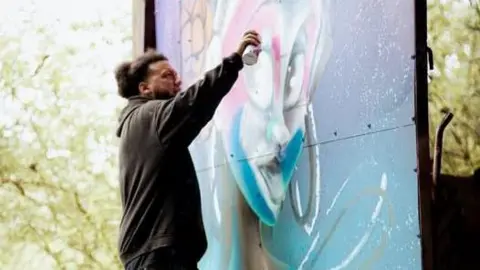 Handout
Handout“In the nineties, it was one of the most tagged cities in Europe.”
Sheffield City Council has acknowledged the benefits of street art and has even commissioned pieces such as Reverie itself.
The authority said tagging was still responsible for 30-40 reports of “non-offensive” graffiti each week.
“These kinds of graffiti should not be confused with actual street art,” a council spokesperson said.
“While some street artists’ styles may resemble graffiti, their intent is clearly different. They are not aiming to vandalise, offend, or deface.
“There is a clear difference between [that and] murals or street art that aim to beautify or engage.”
 Trik09/Instagram
Trik09/InstagramBy definition, graffiti deals with letters while street art deals with characters, Trik said – but they tend to come as a package deal.
“Without graffiti, you wouldn’t have street art,” he said.
“I grew up within graffiti and hip-hop culture, but a lot of people see me as a street artist because I paint characters.
“It’s a complicated subject and very much a spectrum.”
He said new painters have always faced a “trial of fire”, and Sheffield’s changing cityscape could “give artists opportunity”.
“The hoarding boards around the city are not technically permanent – they give people scope to paint,” he added.
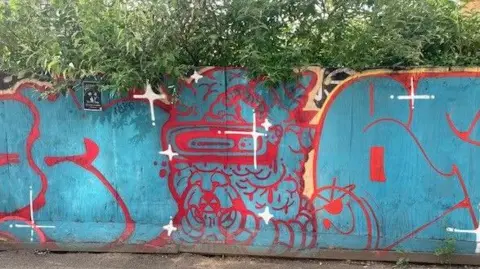 Chloe Aslett/BBC
Chloe Aslett/BBCBut, as various construction projects are completed, even boards are disappearing, said Street Art Sheffield founder Andy Carter.
“The artists struggle to find legal spots where they can paint and practice, and a lot of them do want to do it legally.
“There was a lull, but now there is more and more appearing each year.
“We are a really creative city, but we don’t shout about it. I think we need to, which is a reason why I run the website.”
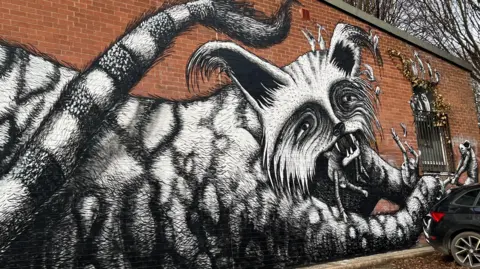 Xanthe Palmer/BBC
Xanthe Palmer/BBCMr Carter, a software engineer, said the site has had hundreds of visitors a day since he set it up in 2014.
“Street art appeals to most people, in my experience,” he said, with older people often taking part in his tours.
“People you wouldn’t expect to like it are really engaged and enjoying it.”
He said Lick of Paint Fest in September, founded by Ms Russell and artist Alastair Flindall, would “create a lot of noise” for an “often-overlooked” city.
Graffiti jams, where artists go head-to-head to create the best piece, and painting of walls across Castlegate and Kelham Island will be part of the free event.
 Street Art Atlas
Street Art AtlasMs Russell said she wanted the festival to show people the art form outside of its negative connotations.
“Graffiti has a bad rep, but it’s the roots of street art, it’s something we want to respect,” she said.
The festival aims to make Sheffield a “hub for street art in the north” and is running longer-term outreach as part of the weekend event.
Logan Walton was one of 10 illustration students who put together and painted a mural at Netherthorpe tram stop, with Ms Russell’s guidance.
 Lick of Paint/Instagram
Lick of Paint/InstagramThe 19-year-old, who mostly creates digital art, said it was “a chance to do something a bit different – I could touch it”.
“I had no interaction with [street art] before, so it’s a new avenue,” he said.
“I loved when people walked past when I was working on it, you can tell it kind of brightens up their day.
“I would like to do it again at some point. It’s kind of opened a door.”
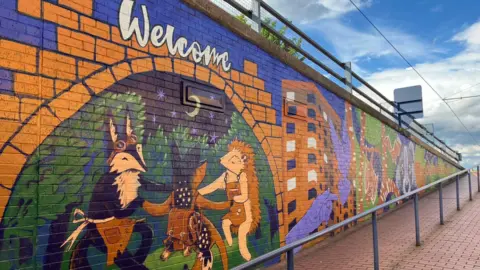
Just half a mile from the students’ project is Kelham Island, where Trik said the street art scene was “blowing up” despite changes to the urban environment.
“The art scene does change with how the city changes,” he said.
“When an area starts to get built up, artists get flooded into different places. We are seeing that now.
“But we’ve got a really good, vibrant section of people here. Younger artists are coming up, and older artists are still making waves.
“It’s looking really positive right now.”
This post was originally published on this site be sure to check out more of their content.






